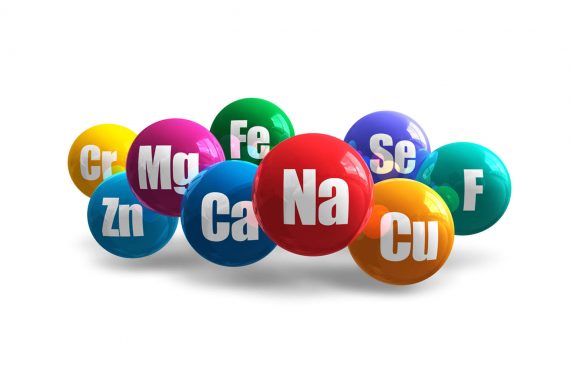Food allergies, or sensitivities are becoming more common along with other allergy symptoms. Several biochemical factors are involved in the causation of food allergies.
Minerals in Foods
A particular food may be high in a certain mineral, or toxic metal that is already excessively high in body tissues, or which for some reason causes a detrimental change in body chemistry. This concept can explain why one person is allergic to one food, while another person is allergic to other foods. The sensitivity to food becomes more pronounced when one’s body chemistry is more precarious, hence, more easily disturbed.
For example, avocados are high in fat and copper. In a slow oxidizer with an elevated tissue copper level, the additional copper and fat tend to worsen the copper toxicity problem resulting in an adverse reaction to eating avocados.
As stated above, foods such as molasses, shellfish, wheat, corn and soy are high in copper content, which can cause allergies in those who are especially sensitive to increased copper ingestion.
A high protein dietary intake can serve to aggravate food allergies in the fast oxidizer because a high protein diet is known to lower calcium and magnesium levels, permitting an increase in histamine release.
Grains are a common cause of fast oxidation types of allergies because the phytates they contain cause a loss of calcium, magnesium and zinc.
Dairy products are also capable of triggering an allergic response, not only because of the milk sugar that some individuals cannot tolerate, but principally because of their high fat and calcium content. Because milk is notoriously low in magnesium, it is common for a calcium deficiency to develop.
Wines and beer can trigger allergies because of their high copper and iron content and/or yeasts they contain.
Sugar-containing foods (even fruit) can precipitate allergic reactions by making copper biounavailable, thus allowing for increased intestinal yeast growth.
Chemical Additives in Foods
Minerals aren’t the only food component that can detrimentally alter body chemistry. Additives, preservatives, colorings, flavorings, pesticides and hundreds of other noxious substances are added to our food. In susceptible individuals, these substances can cause numerous adverse reactions, by upsetting the balance between vital mineral balances.
Digestive Problems
Often food allergies result because a person cannot break down ingested protein foods adequately. Incomplete protein breakdown results in the absorption of incompletely digested peptides and polypeptides. These protein molecules can act as allergens. Another related problem is referred to as the leaky gut. A deficiency of zinc and other essential nutrients required to maintain the integrity of the intestinal wall causes excessive leakage of toxic substances from the intestines into the blood stream.
Liver Dysfunction
Food allergies can also result when the liver is unable to detoxify certain toxic substances found in foods. These may be naturally occurring, or man-made toxins. Copper toxicity, slow oxidation and heavy metal poisoning affect the liver’s ability to detoxify harmful chemical substances.
Food Supplements And Allergies
Some individuals complain of allergies to nutritional supplements. While occasionally the culprit is a particular food product, or chemical used in the manufacture of the product, there are other reasons for adverse reactions to vitamins and mineral supplementation.
Improper food supplementation, by unbalancing body chemistry, can definitely cause allergic reactions. Two common examples are, giving high doses of “B” complex vitamins to fast oxidizers and giving copper to slow oxidizers. Both of these nutrients may cause severe reactions, because they are incorrect supplements for these individuals.
If a supplement contains sufficient nutrients to positively affect body chemistry, it may also detrimentally alter body chemistry so that a person becomes more reactive to toxic substances. Many individuals are so depleted of energy, that they can no longer mount an allergic reaction. As one’s energy level increases, a sign of healing may be the return of allergies, indicating that the body is able to react positively to the ingestion, or inhalation of toxic substances.
Unfortunately, the flare-up in symptoms is often mistaken for a worsening of health, instead of welcoming the improved reactivity of the body.
If you are having allergic reactions to food supplements, we recommend that you eliminate one supplement at a time for several days each and identify, if possible, which one is causing the seemingly adverse reaction. You then may be able to reintroduce it slowly, little by little.
Food Allergy Testing
Testing for food allergies has become popular and offers positive benefits for some individuals. These tests are commonly performed by skin testing, or by mixing a blood sample with food extracts (cytotoxic testing). A drawback of all these tests is that if a food is eaten repeatedly, a person will often develop some antibodies to that food. The person may then test allergic to whatever he habitually eats. If he changes his diet and is retested several months later, he may experience allergies again to his new diet. This is a false positive result of food allergy tests.
Some of these problems can be avoided by using a rotation system, avoiding a concentration of one type of food.
Another method of food allergy testing is to determine your resting pulse rate and then note if your pulse rate increases more than 10 beats per minute after eating one specific food. If your pulse rate increases, it is likely that this food is causing an allergic reaction.
Food allergy testing can be very beneficial for those who are unaware of how their food is affecting them. However, a person can become sensitive enough to know which foods cause a problem and can become a better detective than any test. This is particularly the case today, when a string bean in the supermarket, raised in Mexican soil and contaminated with several pesticides, may not have the same effect as the string-bean extract used in the blood, or skin test.
Food Addiction
There is another phenomenon which makes the food allergy problem even more complicated. It is called food addiction. In this condition, a person craves the very food that worsens, or maintains his abnormal body chemistry. The reason for this is that psychologically the person is happy where he is and uses a particular food to maintain his comfort zone. He is resistant to change because change is stressful. In these cases, eating food the body really requires can be unpleasant. For example, refraining from alcohol and addictive foods serves to break long established mineral patterns and in certain instances increases one’s awareness, which can be particularly unpleasant for the addicted individual.
Source: http://www.arltma.com/









